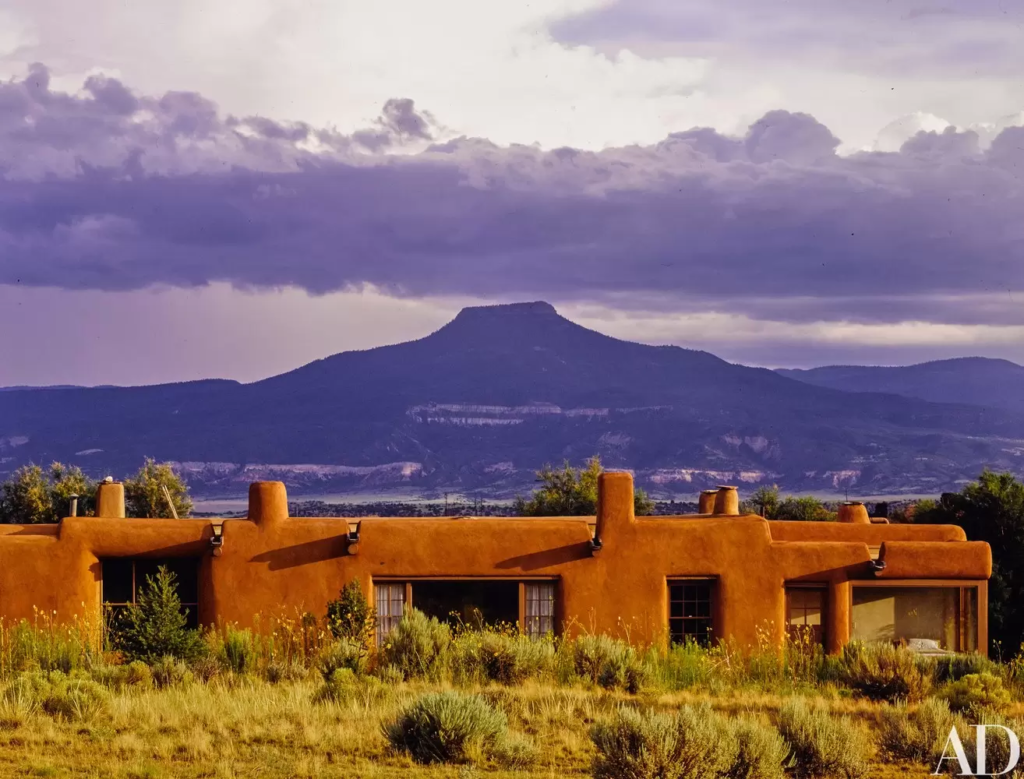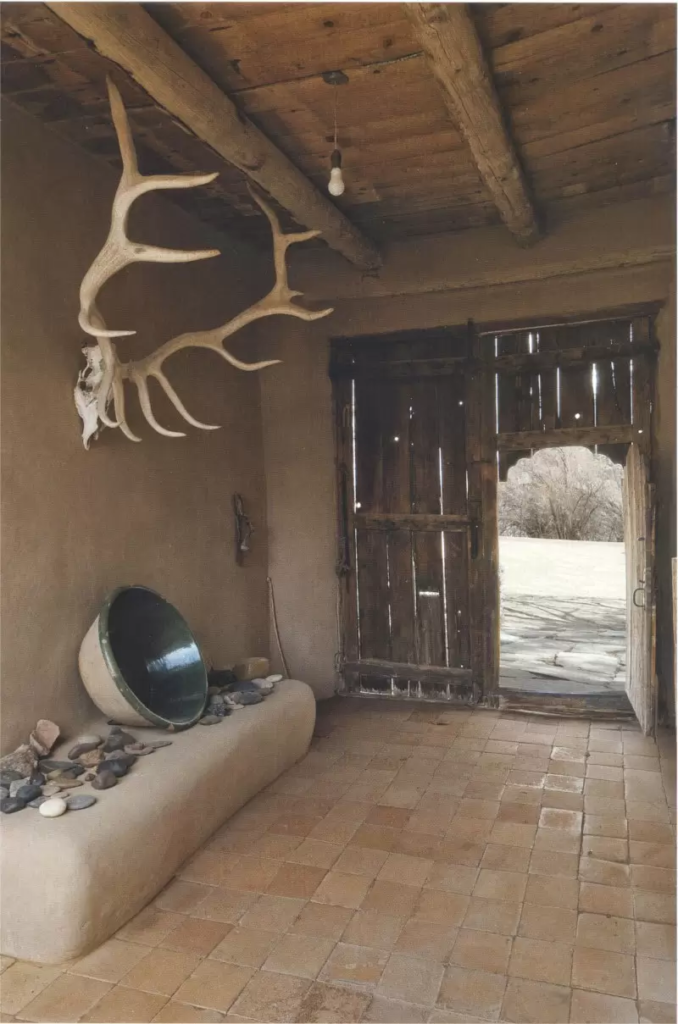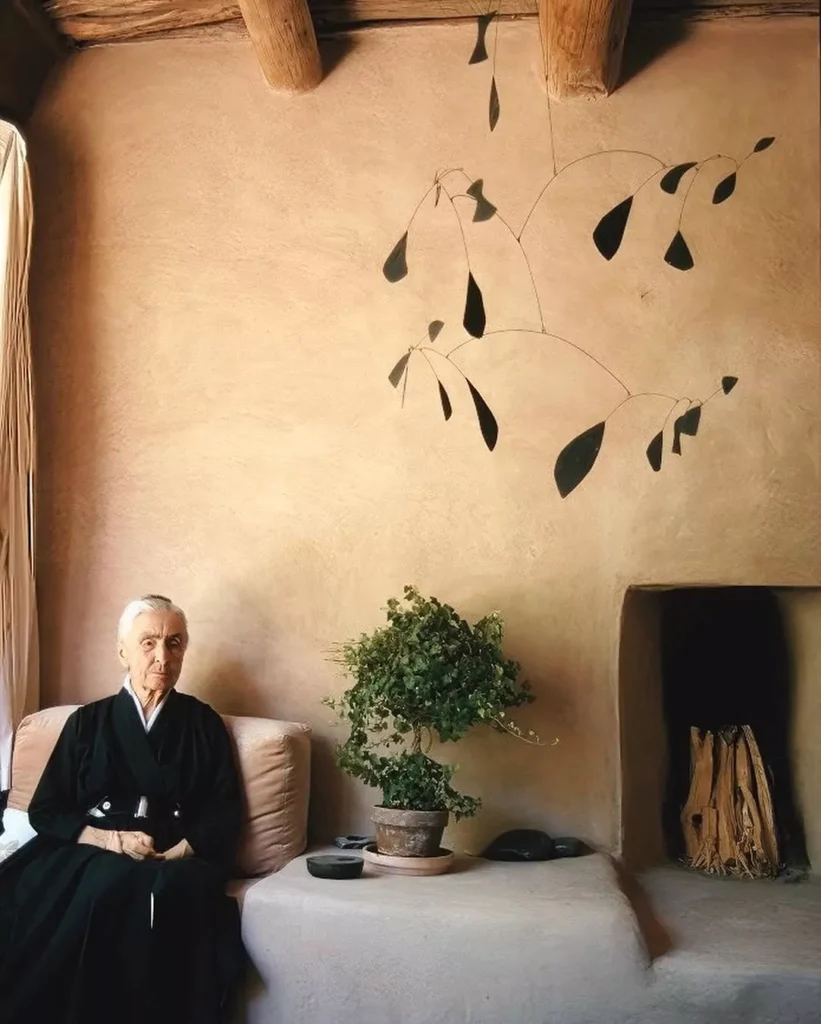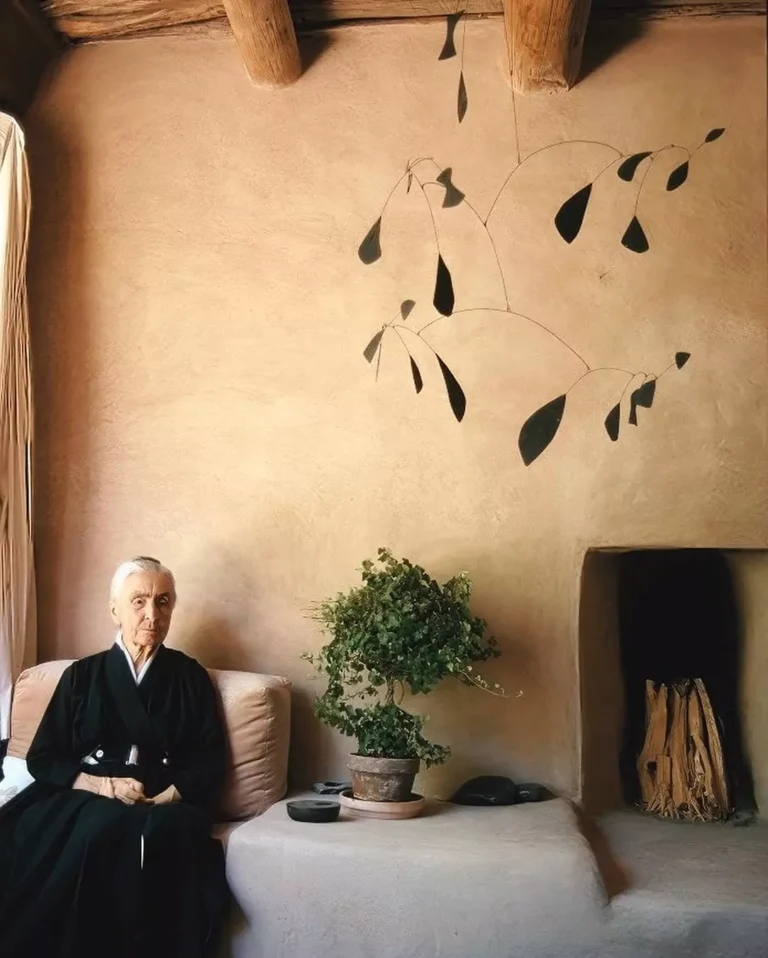Looking for a muse? Check no further. Discover the Best of Art, Culture, History & Beyond!

Georgia O’Keeffe (1887–1986) remains one of the most celebrated American artists, known for her distinctive paintings of enlarged flowers, New Mexico landscapes, and abstract forms. While she gained recognition in New York, her heart belonged to the vast, serene landscapes of the Southwest. Her life in New Mexico, split between Ghost Ranch and her home in Abiquiú, deeply influenced her art and legacy.
The Search for Solitude in New Mexico
During her early years as a painter, Georgia O’Keeffe lived in New York with her husband, Alfred Stieglitz, a renowned photographer and gallerist. Stieglitz’s world was filled with social gatherings, salons, and endless conversations—an atmosphere that, while stimulating, left O’Keeffe yearning for solitude. Even when they retreated to their country home in upstate New York, they were constantly surrounded by guests and family.
O’Keeffe’s first visit to New Mexico in 1917 left a deep impression on her. The vast, rugged landscapes, earthy tones, and dramatic skies fascinated her. As the bustling life of New York City became more oppressive, she longed to return to the quiet beauty of the Southwest.
Ghost Ranch: A Sanctuary for Creativity

In 1929, O’Keeffe finally traveled to Taos, staying in an artists’ colony hosted by Mabel Dodge Luhan. However, the communal setting did not provide the isolation she craved. She began renting various homes in New Mexico until she found the perfect retreat.
In 1934, she purchased her first home in the region, known as Ghost Ranch. Nestled in the high desert, this Pueblo-style house became the setting for many of her iconic works. The stark, breathtaking scenery of Ghost Ranch, with its red cliffs and shifting light, appeared repeatedly in her paintings.
One of the unexpected elements of her new home was the lack of vibrant flowers—a stark contrast to the floral subjects that dominated her early work. The only plant that thrived in the harsh desert landscape was a weed, which O’Keeffe painted extensively in the 1930s, turning it into an emblem of resilience and beauty.
Abiquiú: A Second Home and a New Perspective
In 1945, O’Keeffe purchased a second home in Abiquiú, a small village with a more sustainable water supply, allowing her to cultivate a garden. This home became her primary residence for the rest of her life. The mud-brick adobe walls and wooden elements of the house created a harmonious blend of natural and architectural beauty, inspiring many of her paintings.

The views from her home in Abiquiú were just as striking as those at Ghost Ranch. The play of light on the desert terrain and the ever-changing colors of the sky fascinated her. Her paintings from this period reflect a deep connection to the landscape, with simplified forms and a meditative quality that capture the essence of the region.

The Influence of New Mexico on Her Art
Moving to New Mexico marked a significant shift in O’Keeffe’s artistic style. While she continued to paint flowers, her focus expanded to include the sweeping vistas, animal bones, and unique geological formations of the Southwest.
Some of her most famous works inspired by New Mexico include:
- “Black Place Series“ – Abstracted depictions of the rolling hills in the desert, emphasizing their undulating forms and deep shadows.
- “Ram’s Head, White Hollyhock-Hills” (1935) – A striking composition combining desert elements, symbolizing the harsh yet beautiful nature of the region.
- “Pelvis Series“ – Close-up studies of animal bones found in the desert, which she transformed into elegant, almost otherworldly shapes.
A Private Life and Public Fascination
By the 1960s, O’Keeffe’s reclusive lifestyle in New Mexico added to her mystique. While she continued to paint, she became more reserved, carefully managing her public image. Her home in Abiquiú was extensively photographed during this period, particularly as she aged. Among the most notable photographers who captured her in these later years was Yousuf Karsh, known for his dramatic portraiture.
Interestingly, despite O’Keeffe’s artistic vision and keen sense of aesthetics, the 1960s and 1970s interior design trends influenced her home’s decor. While some elements reflected her minimalist sensibilities, others bore the hallmarks of the era’s eclectic styles.
The Kitchen as a Creative Space

One of the most striking aspects of O’Keeffe’s home was her 1950s-style kitchen, which blended functionality with artistic simplicity. Like her paintings, her living space was an extension of her artistic philosophy—clean lines, natural materials, and a deep appreciation for the beauty of everyday objects.
Her ability to find profound beauty in the stark landscapes of the Southwest transformed not only her own artistic journey but also how the world perceives American modernism. O’Keeffe’s work continues to inspire generations of artists, proving that creativity thrives in both the solitude of nature and the intimacy of personal spaces.

This article is published on ArtAddict Galleria, where we explore the intersections of art, history, and culture. Stay tuned for more insights and discoveries!
